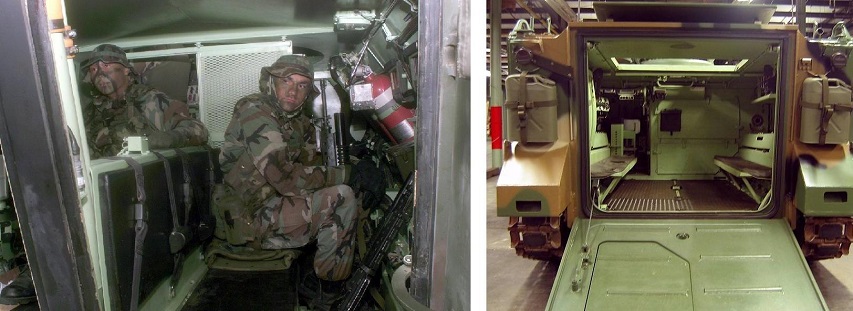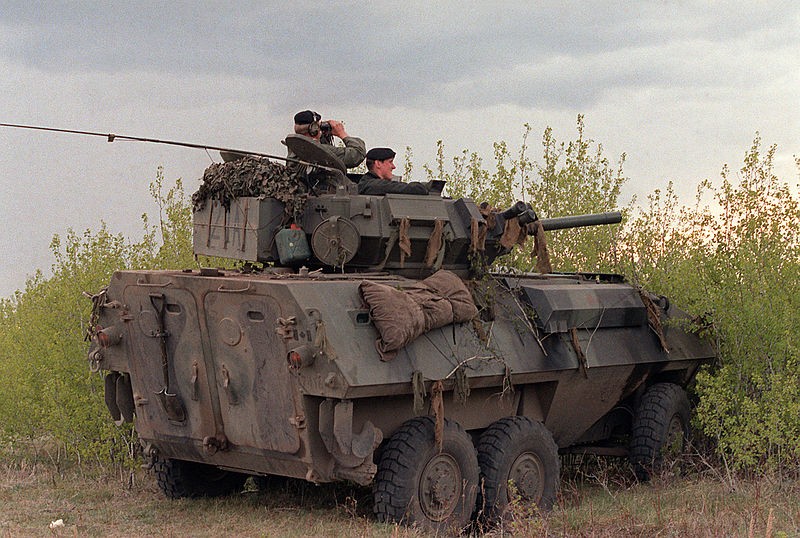An interesting post by Frank Maas at the LCMSDS website looks at the story of the Canadian army’s attempts during the 1980s to get modern armoured vehicles for infantry support and battlefield mobility:
The Militia, the traditional mobilization base for the Canadian army, withered during the Cold War. Its ranks were flushed with Second World War veterans in the 1950s and there was money for new tanks and vehicles, but morale declined as the Militia’s role became civil defence in the late 1950s, and it languished in the 1960s and 1970s as defence budgets shrank. The Militia reached a nadir of 15,000 by the late 1970s, but ironically, there was a false dawn at the end of the Cold War. In the 1987 Defence White Paper, Challenge and Commitment, the Mulroney government announced that the strength of the Reserves would skyrocket to 90,000, and would complement Regular units and allow Canada to better meet commitments to NATO and continental defence. This increase in strength would be complemented by a package of improvements to bases and new equipment purchases. One of these was for a purchase of 200 armoured personnel carriers, and here the story begins.
Back then, Colonel Romeo Dallaire was head of the army’s department for assessing armoured vehicles. Dallaire was intent on purchasing the venerable and ubiquitous M113, which first entered service in the 1960s, and is one of the most numerous armoured vehicles in the world. (The Canadian army had purchased more than 900 in the 1960s, and fielded up-armoured M113s in Afghanistan). The original plan was to buy 200 M113s from the American manufacturer and have some components licence-built in Canada to fulfill requirements for Canadian content.
At the same time, however, Canada’s only manufacturer of armoured vehicles, Diesel Division General Motors (DDGM), in London Ontario, was nearly out of work. It was approaching completion of a United States Marine Corps order for 758 vehicles, and although some sales to Saudi Arabia were on the horizon for the early 1990s, the company was facing a year with empty production lines. Some salesmen and engineers at DDGM began to think they could scoop up the contract for two hundred APCs by substituting their vehicle, the Piranha Light Armoured Vehicle (LAV), and bridge the gap between the contracts.
There were some significant differences between the Piranha LAV and the M113 that would complicate DDGM’s plan. First, the LAV was wheeled, and the M113 was tracked. Wheeled vehicles were easier to maintain, but tracked vehicles had better off-road mobility. Second, the sides of the LAV’s troop compartment sloped sharply inward, which improved ballistic protection, but reduced internal space. Finally, the LAV had doors at the back for soldiers to deploy from, while the M113 had a ramp which made it much easier for soldiers to run out of the back of the vehicle. DDGM’s engineers could not do much about putting tracks on the LAV-25, although a wheeled vehicle would be better-suited for service with the Reserves because it would be cheaper to operate and soldiers could drive it on roads. (There are prohibitions against driving tracked vehicles on roads). DDGM could reconfigure its vehicle to look more like a M113 from the back to convince the army to accept the LAV-25 as a substitute, but this would require a significant reconfiguration of the vehicle.
Back in the late 1970s, my militia unit got some familiarization training with the then-new Grizzly AVGP, which was based on an earlier model than the LAV. While it was neat to be given the chance to try working with (and in) new equipment, we found that getting in and out of the back of the vehicle was awkward and much slower than we (well, actually our NCOs) had hoped. Practicing a dismount with a full infantry section on board was … less than tactically brilliant. The small doors tended to snag any of our equipment as we squeezed through, so you had to move more slowly to get through successfully.
Here’s a look at the rear of the Cougar AVGP from the same vehicle family as the Grizzly:





